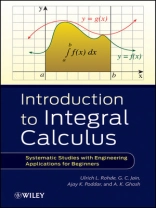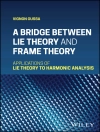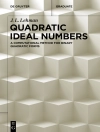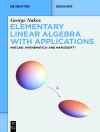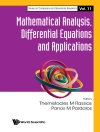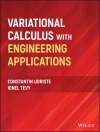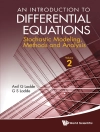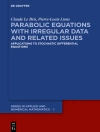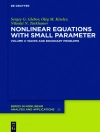An accessible introduction to the fundamentals of calculus
needed to solve current problems in engineering and the physical
sciences
I ntegration is an important function of calculus, and
Introduction to Integral Calculus combines fundamental concepts
with scientific problems to develop intuition and skills for
solving mathematical problems related to engineering and the
physical sciences. The authors provide a solid introduction to
integral calculus and feature applications of integration,
solutions of differential equations, and evaluation methods. With
logical organization coupled with clear, simple explanations, the
authors reinforce new concepts to progressively build skills and
knowledge, and numerous real-world examples as well as intriguing
applications help readers to better understand the connections
between the theory of calculus and practical problem solving.
The first six chapters address the prerequisites needed to
understand the principles of integral calculus and explore such
topics as anti-derivatives, methods of converting integrals into
standard form, and the concept of area. Next, the authors review
numerous methods and applications of integral calculus,
including:
* Mastering and applying the first and second fundamental theorems
of calculus to compute definite integrals
* Defining the natural logarithmic function using calculus
* Evaluating definite integrals
* Calculating plane areas bounded by curves
* Applying basic concepts of differential equations to solve
ordinary differential equations
With this book as their guide, readers quickly learn to solve a
broad range of current problems throughout the physical sciences
and engineering that can only be solved with calculus. Examples
throughout provide practical guidance, and practice problems and
exercises allow for further development and fine-tuning of various
calculus skills. Introduction to Integral Calculus is an excellent
book for upper-undergraduate calculus courses and is also an ideal
reference for students and professionals who would like to gain a
further understanding of the use of calculus to solve problems in a
simplified manner.
Inhaltsverzeichnis
FOREWORD ix
PREFACE xiii
BIOGRAPHIES xxi
INTRODUCTION xxiii
ACKNOWLEDGMENT xxv
1 Antiderivative(s) [or Indefinite Integral(s)] 1
1.1 Introduction 1
1.2 Useful Symbols, Terms, and Phrases Frequently Needed 6
1.3 Table(s) of Derivatives and their corresponding Integrals
7
1.4 Integration of Certain Combinations of Functions 10
1.5 Comparison Between the Operations of Differentiation and
Integration 15
2 Integration Using Trigonometric Identities 17
2.1 Introduction 17
2.2 Some Important Integrals Involving sin x and cos x 34
2.3 Integrals of the Form ? (d/( a sin
+ b cos x)), where a, b
epsilon r 37
3a Integration by Substitution: Change of Variable of
Integration 43
3b Further Integration by Substitution: Additional Standard
Integrals 67
4a Integration by Parts 97
4b Further Integration by Parts: Where the Given Integral
Reappears on Right-Hand Side 117
5 Preparation for the Definite Integral: The Concept of Area
139
5.1 Introduction 139
5.2 Preparation for the Definite Integral 140
5.3 The Definite Integral as an Area 143
5.4 Definition of Area in Terms of the Definite Integral 151
5.5 Riemann Sums and the Analytical Definition of the Definite
Integral 151
6a The Fundamental Theorems of Calculus 165
6b The Integral Function D x 1 1 t dt, (x > 0)
Identified as ln x or loge x 183
7a Methods for Evaluating Definite Integrals 197
7b Some Important Properties of Definite Integrals 213
8a Applying the Definite Integral to Compute the Area of a
Plane Figure 249
8b To Find Length(s) of Arc(s) of Curve(s), the Volume(s) of
Solid(s) of Revolution, and the Area(s) of Surface(s) of Solid(s)
of Revolution 295
9a Differential Equations: Related Concepts and Terminology
321
9a.4 Definition: Integral Curve 332
9b Methods of Solving Ordinary Differential Equations of the
First Order and of the First Degree 361
INDEX 399
Über den Autor
ULRICH L. ROHDE, Ph D, Sc D, Dr-Ing, is Chairman of Synergy
Microwave Corporation, President of Communications Consulting
Corporation, and a Partner of Rohde & Schwarz. A Fellow of the
IEEE, Professor Rohde holds several patents and has published more
than 200 scientific papers.
G. C. JAIN, B.Sc., is a retired scientist from the
Defense Research and Development Organization in India.
AJAY K. PODDAR, Ph D, is Chief Scientist at Synergy
Microwave Corporation. A Senior Member of the IEEE, Dr. Poddar
holds several dozen patents and has published more than 180
scientific papers.
A. K. GHOSH, Ph D, is Professor in the Department of
Aerospace Engineering at the IIT Kanpur, India. He has published
more than 120 scientific papers.
